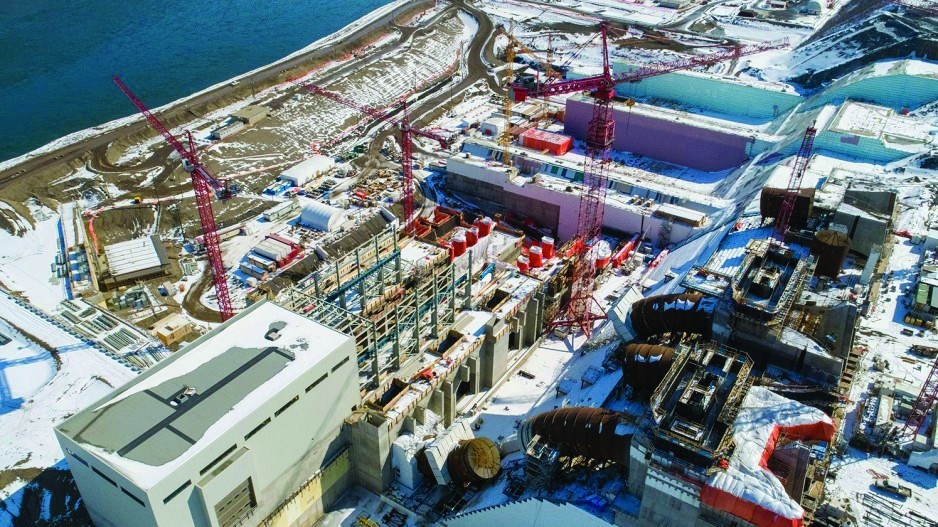Premier John Horgan assumed the demeanour of a physician delivering bad news to a patient when he revealed the findings of Peter Milburn’s review of the Site C dam project.
Horgan announced February 26 that the government will finish building the hydroelectric megaproject, despite new estimates that now put the cost of completing the project at $16 billion.
The capital cost of the dam had already jumped from $8.6 billion under the BC Liberal government, to $10.7 under the BC NDP, and hit its most recent estimate thanks to pandemic-related delays and some troublesome geotechnical challenges.
A number of recent analyses by economists, and energy and public policy experts suggest that, if the project were to go much over $10.7 billion, it would make sense to cancel the project now, even though it is half complete and $6 billion has been spent, and instead meet B.C.’s future energy demands with natural gas power or wind and battery storage.
But cancelling the project now would be an even worse deal for taxpayers, the government concludes.
"Cancelling Site C when it was half done would have meant laying off 4,500 workers, just as we're coming out of the impact of the pandemic," Horgan said at a press conference. "It would have left us with a $10 billion debt and nothing to show for it.
Some experts offer a way out for the Horgan government, should it decide to complete the project, by suggesting that it partner up with Alberta on a regional clean power strategy.
Whatever the size of its eventual total overrun, Site C is by no means unique as a budget buster. Most large hydroelectric dams end up going significantly over budget and most suffer delays in getting built, according to a commission of inquiry into the Muskrat Falls project in Labrador, which is also on track to cost roughly double its original estimated capital outlay.
The inquiry examined 274 hydroelectric dam projects around the world, and found the average cost overrun to be 96%. In other words, twice the original estimate is the norm for large hydroelectric dam projects.
“The data also show that on average dams nearly double their budget,” the commission notes.
Schedule delays are also the norm.
“The data show that schedule overrun is more likely than not. Eight out of 10 past hydro-electric dams were delayed.”
The only other energy projects that suffer even worse delays and cost overruns are nuclear power plants, the commission found.
While unexpected geotechnical challenges like the one now plaguing Site C are often a contributing factor to ballooning budgets, the real problem, according to the commission of inquiry, is governments and utilities lowballing the cost estimates from the start.
Large dam projects almost universally exceed budgets, the report states, due to political “bias” and “optimism.”
“Often cost and schedule overruns are explained by unforeseen conditions and adverse events, e.g. unforeseen geology, project complexity, scope changes, bad weather,” the inquiry report notes.
“However, these are not root causes. The root causes of cost overruns and schedule delays can be found in optimism and political bias in estimates of geology, complexity, scope, weather, etc., which translate into underestimates of cost and schedule, which later turn into cost and schedule overruns.”
In hindsight, the previous Liberal government might have avoided some of the problems now plaguing Site C had it not exempted the project from a thorough review by the BC Utilities Commission (BCUC). The commission might well have recommended against the project in favour of other energy sources to meet B.C. future power needs.
In an opinion piece in December, Simon Fraser University sustainable energy economist Mark Jaccard (a former BCUC commissioner) and University of Calgary public policy professor Blake Shaffer suggested the project should probably never have been sanctioned in the first place, given the falling costs of wind power.
“But what's done is done, and absent a time machine, the decision to complete the dam rests on go-forward costs,” they wrote.
Jaccard and Shaffer point to an analysis done by three academics – Nic Rivers (University of Ottawa), Kent Fellows (University of Calgary) and Brett Dolter (University of Regina).
They said Site C dam could still make economic sense, despite its budget overruns, but only if two things happen: higher levels of decarbonization in Alberta and B.C., and co-operation between those two provinces on power trading.
With beefed-up interties and a power-sharing agreement, B.C.’s dispatchable hydro power could facilitate the replacement of coal power in Alberta with wind and solar.
“Rather than displacing wind and solar, large hydro facilities with the ability to increase or decrease output on short notice can actually enable more investment in these renewable sources,” Jaccard and Shaffer write.
“Expanding the transmission connection, with Site C on one side of that line, becomes even more valuable.”
But on February 26, at least one of the authors of the analysis of Site C -- Kent Fellows -- said the dam project is now beyond the point where it could provide a net benefit.
On February 26, he tweeted: "With this new price tag, it appears as tough there is now no reasonable scenario wherein Site C will produce a net benefit."
See related story on engineering challenges and fixes for Site C dam.



